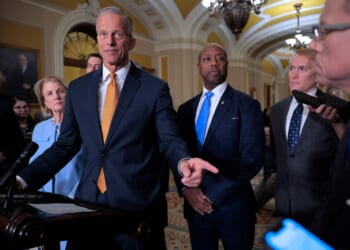The Education Department’s negotiated rulemaking committee reached consensus last week on which types of graduate degree programs will be eligible for higher federal student loan limits under the One Big Beautiful Bill Act (OBBB). Under the law, students in “professional degree” programs will be allowed to borrow up to $50,000 per year, or $200,000 in aggregate. Other graduate students will be limited to $20,500 per year or $100,000 in aggregate. These new limits will hold down student debt and encourage students to shift towards lower-cost options for graduate school.
Lawmakers left the exact definition of “professional degree” to the Education Department. While it may seem technical, it’s important to get this right. Students in high-salary but expensive fields like medicine may need more borrowing capacity to pay their tuition. But extending high loan limits to all programs means students in lower-wage fields like education and social work could wind up with debt they can’t afford.
It’s a tricky balance, and the committee did a good job striking it. Under the definition they settled on, professional degrees require at least two years of post-baccalaureate coursework (or six years of postsecondary education overall) and must provide preparation for a licensed occupation. The critical limitation is that only the following degrees, along with closely related fields, qualify as professional: Pharmacy (Pharm.D.), Dentistry (D.D.S. or D.M.D.), Veterinary Medicine (D.V.M.), Chiropractic (D.C. or D.C.M.), Law (L.L.B. or J.D.), Medicine (M.D.), Optometry (O.D.), Osteopathic Medicine (D.O.), Podiatry (D.P.M., D.P., or Pod.D.), Theology (M.Div., or M.H.L.), and Clinical Psychology (Psy.D. or Ph.D.).
This list includes mostly degree programs where borrowing rates are high today. For instance, just 31 percent of medical students borrow less than the standard graduate loan limit of $20,500 per year. But 59 percent borrow within the professional loan limit of $50,000 per year. The professional loan limits therefore ensure the majority of medical students can meet their financing needs—while limiting debt for the highest-cost programs.

By contrast, the Education Department’s definition excludes degrees where typical borrowing amounts are lower. Even though schools of social work clamored for their programs to be recognized as “professional,” 72 percent of students pursuing a Master of Social Work (MSW) borrow less than the $20,500 standard annual limit for graduate programs. For doctorates of education (Ed.D.), 84 percent of students borrow within the standard limit. It therefore makes sense to exclude degrees such as the MSW and Ed.D. from the definition of professional programs.

Granted, some students in non-professional programs borrow above the standard annual limits. But policymakers shouldn’t set loan limits so high that any student can borrow whatever they want. The intent of the One Big Beautiful Bill Act is to constrain student debt by limiting the ability of universities to hike tuition and pass the costs to students and taxpayers via the student loan program.
The new loan limits will hold down student debt for some notoriously expensive programs. While most MSW students do not borrow excessively, one exception is the University of Southern California, which partnered with a for-profit company to hawk an online social-work degree where students racked up cumulative debts of $115,000, an outrageous loan burden given social workers’ lower earnings. Taxpayers should not have to subsidize such programs when lower-cost options are available. At nearby California State University-Los Angeles, for instance, median debt for the MSW program is less than $30,000.
Overall, the committee struck a delicate balance in its definition of professional programs. The framework preserves necessary federal financing for medical students and others in high-cost, high-return professional programs. At the same time, it avoids opening up the floodgates and drowning America’s graduate students in unpayable debt.
The post A Welcome Consensus on Professional Student Loan Limits appeared first on American Enterprise Institute – AEI.














